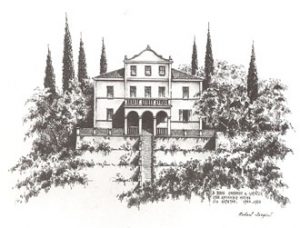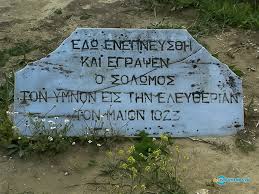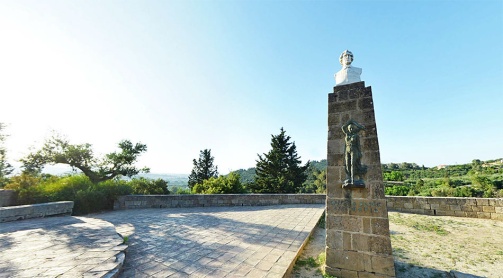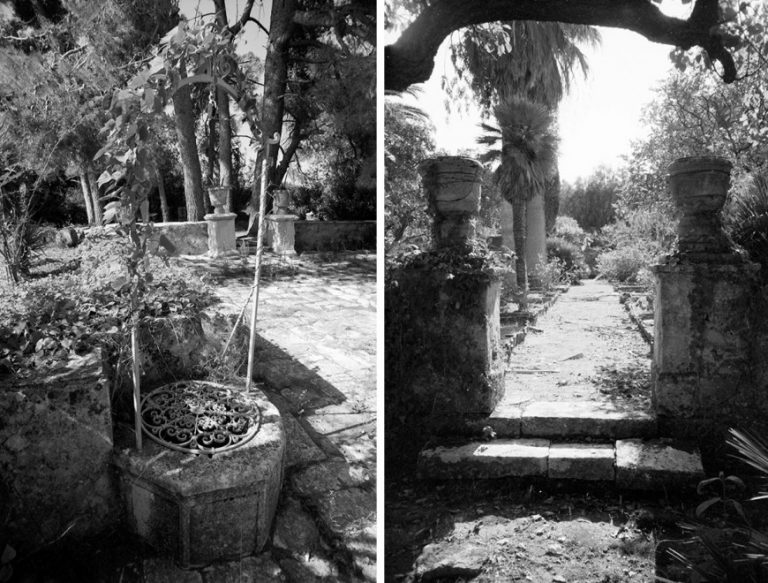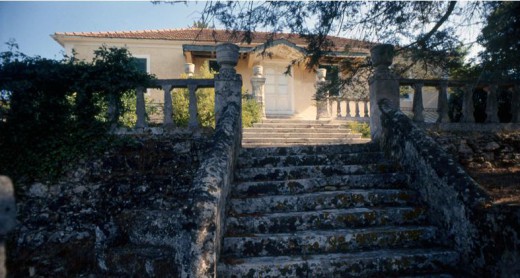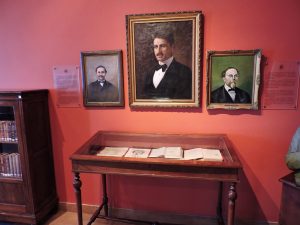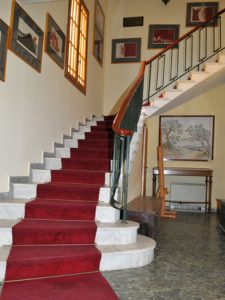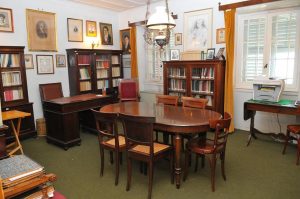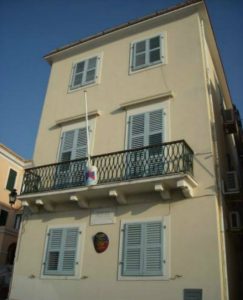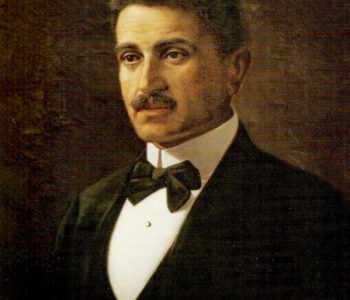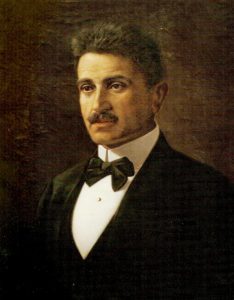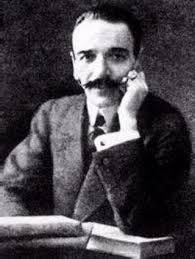
Cultural Itinerary of Gregorios Ksenopoulos in Zakynthos

“Among the most prolific writers of this generation was Gregorios Ksenopoulos (1867-1951), from Zakynthos. […] His novels are influenced by realism and naturalism; he also recognized as teachers Balzac and Zola, and even Dickens and Daudet. It is also worth mentioning the great leap that modern Greek literature has made with it from the limited context of the ethographic narrative to the complex urban novel. And again, it is not irrelevant how much Ksenopoulos has been read by a wide audience, thus broadening the general interest in literature. ”
Linos Politis, History of Modern Greek Literature, National Bank Cultural Foundation, Athens 1998 (9th ed.), 214-215
The Brief Autobiography written by the author himself, Gregorios Ksenopoulos, as well as the video Seasons and Writers from ERT’s archive are presented in the following:
http://www.ekebi.gr/magazines/showimage.asp?file=26893&code=7168&zoom=800
Zakynthos
1st Stop: The House of Gregorios Ksenopoulos – Gregorios Ksenopoulos Museum
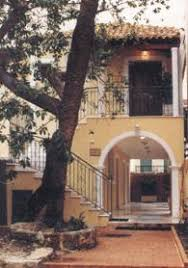 The Gregorios Ksenopoulos Museum is housed in the father’s home of the writer on Gaita Street, located in the historic district of Faneromeni in Zakynthos. In the museum the visitor can tour the spaces of the writer’s house, see close personal items of the writer, manuscripts and publications of his works, issues of the magazine “The Education of the Children”.
The Gregorios Ksenopoulos Museum is housed in the father’s home of the writer on Gaita Street, located in the historic district of Faneromeni in Zakynthos. In the museum the visitor can tour the spaces of the writer’s house, see close personal items of the writer, manuscripts and publications of his works, issues of the magazine “The Education of the Children”.
Also, exhibits include objects, furniture and utensils from the house of the Ksenopoulou family, which offer a complete picture of the writer’s everyday life. There are even several belongings of the author’s daughter Efthalia Ksenopoulou-Natsiou and her husband, Christopher Natsios, who was a famous sculptor.
2nd stop: The House of Gregorios Ksenopoulos – Ksenopouleios Library
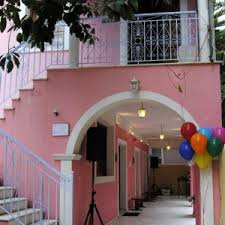 The Ksenopouleios Children’s Library is hosted also at the Gregory Ksenopoulos Museum. The library was organized with the help of teachers of the Zakynthos island and was financially supported by the Municipality of Zakynthos as a Municipal Library. The library hosts books of literature, knowledge, encyclopedias, books of Zakynthian writers, pre-school, school and teenage magazines. Visitors can also see and study the large collection of works by Gregory Ksenopoulos. In the library there is also a section with books for adults, for parents accompanying their young children in the various and interesting events / activities which take place throughout the year in the Xenopuleios library.
The Ksenopouleios Children’s Library is hosted also at the Gregory Ksenopoulos Museum. The library was organized with the help of teachers of the Zakynthos island and was financially supported by the Municipality of Zakynthos as a Municipal Library. The library hosts books of literature, knowledge, encyclopedias, books of Zakynthian writers, pre-school, school and teenage magazines. Visitors can also see and study the large collection of works by Gregory Ksenopoulos. In the library there is also a section with books for adults, for parents accompanying their young children in the various and interesting events / activities which take place throughout the year in the Xenopuleios library.
3rd Stop: Museum of D. Solomos & Eminent People of Zakynthos, San Marco square
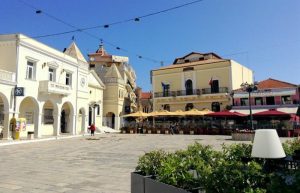
St. Mark’s Square was once the center of the culture of Zakynthos. During the Venetian occupation, writers, poets, noble and generally influential persons exchanged views in the café that existed inside it. In this square occurred historical events that shaped the political developments on the island. In 1797 the Popolars rebelled and burned the golden book of noble “Libro D`Oro”. The Popolars planted the “tree of freedom” in the center of the square, wanting to symbolize their release from the Venetians and to welcome the French Democrats.
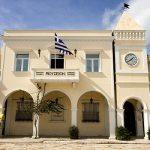 The first thought of creation for the Solomos Museum is recorded in 1903, when the manuscripts of the national poet were donated to the centenary commemoration. The Museum of D. Solomos & Eminent People of Zakynthos, however, was built after the earthquake of 1953, in the historic square of San Marco, on a site donated by the Metropolitan Church of Zakynthos, and was rebuilt with financial aid from the State, various institutions and many individuals. In these chambers are exhibited portable icons of the Cretan and Cretan-Eptinian school of the 17th-18th century portraits of prominent 17th-20th century Zakynthos bronze busts of Zakynthian hierarchs and people of the spirit, period furniture from Zakynthian mansions, musical instruments, plastic-ceramics, wood-carving, metalwork, coin molds, embroidery, knitwear, jewelery, gravures, melanographs, photographs and coats of arms. From the rich archive material stand out from the donated by Aspasia Sordina Rigler and rescued by Nick. Varvianian manuscripts by Dionysios Solomos, Nikolaos Mantzaros, Nicholas Loudzis, Antonios Matesis, Ioannis Tsakasianos, Dionysios Roma, Paul Karreris and Gregorios Ksenopoulos. The Museum houses the unique Mausoleum in Greece and numerous relics, donated by various institutions and individuals, and has been operating since August 24, 1966. Ιn 2000, it was nominated for the 2001 European Museum of the Year award.
The first thought of creation for the Solomos Museum is recorded in 1903, when the manuscripts of the national poet were donated to the centenary commemoration. The Museum of D. Solomos & Eminent People of Zakynthos, however, was built after the earthquake of 1953, in the historic square of San Marco, on a site donated by the Metropolitan Church of Zakynthos, and was rebuilt with financial aid from the State, various institutions and many individuals. In these chambers are exhibited portable icons of the Cretan and Cretan-Eptinian school of the 17th-18th century portraits of prominent 17th-20th century Zakynthos bronze busts of Zakynthian hierarchs and people of the spirit, period furniture from Zakynthian mansions, musical instruments, plastic-ceramics, wood-carving, metalwork, coin molds, embroidery, knitwear, jewelery, gravures, melanographs, photographs and coats of arms. From the rich archive material stand out from the donated by Aspasia Sordina Rigler and rescued by Nick. Varvianian manuscripts by Dionysios Solomos, Nikolaos Mantzaros, Nicholas Loudzis, Antonios Matesis, Ioannis Tsakasianos, Dionysios Roma, Paul Karreris and Gregorios Ksenopoulos. The Museum houses the unique Mausoleum in Greece and numerous relics, donated by various institutions and individuals, and has been operating since August 24, 1966. Ιn 2000, it was nominated for the 2001 European Museum of the Year award.
4th Stop: Ammos quarter – Gregorios Ksenopoulos Statue
In 1961, the marble bust of Academician Gregorios Ksenopoulos (1867-1951) was painted by the sculptor Nikolaos Sofiolakis (1914-2002) in the area of Ammos. The construction of the project is due to the initiative of the students of the Second Gymnasium of Athens and the participation of the students of the Secondary Education of Athens and Piraeus. At the base of the bust it is written: “TO PHAIDONA /THE STUDENTS OF THE SECONDARY EDUCATION / ATHENS-PIRAEUS / 1959-1960”
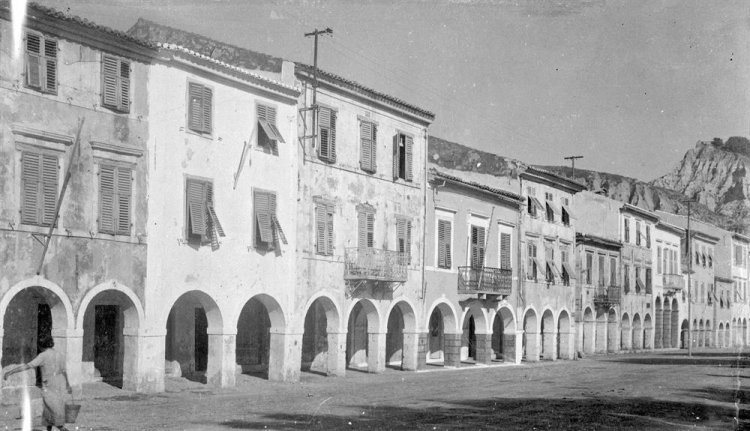

5th stop: City of Athens Cultural Center – Gregorios Ksenopoulos Statue
The City of Athens Cultural Center is the cultural center of the Municipality of Athens, in Greece. It is housed in an 1836 neoclassical building in the center of Athens. Originally the building housed the Municipal Hospital. It includes three exhibition rooms, the Fotis Kontoglou, Georgios Iakovidis and Nikolaos Gyzis halls, as well as the Antonis Tritsis amphitheatre, which holds various interdisciplinary seminars, conferences and other events. In the garden of the Cultural Center the bust of the writer Grigorios Ksenopoulos is placed.
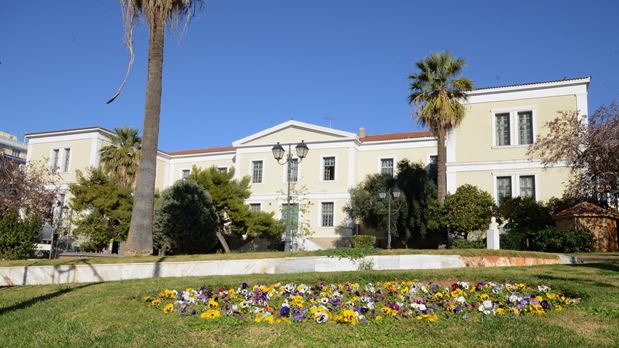
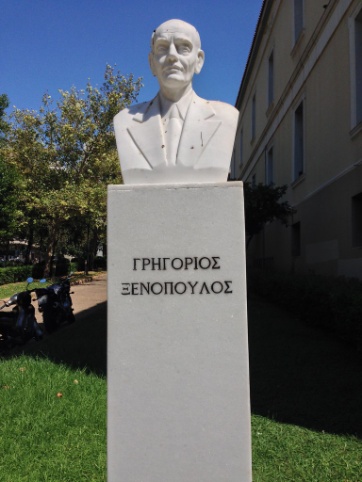
6th Stop: The house of Gregorios Ksenopoulos, 42, Euripidou Str., Athens
On the third floor of a residence at 42, Euripidou street lived Grigorios Ksenopoulos. There he had his headquarters and his magazine, “The Education of the Children”. There he had the manuscripts of his theatrical plays, which were finally lost due to the complete destruction of his house by an incendiary bomb in a battle in December 1944. Palamas, considered Ksenopoulos ‘s house “Museum of our Culture in the Future” because of Ksenopoulos’ huge and important archive (his anecdotal works, the archive of “Diaplasis”, his correspondence with Greek and foreign authors, his other texts, photographic and visuals, even documents for the theater, the Letters, the Arts in general, the personal heirlooms of the writer, etc.) .
Of particular interest is the narrative of Lambros Gouliadis, who deals with food trade, having a shop at 42 Evripidou Street. “Long time ago, Grigorios Ksenopoulos lived here. His house was exploded in the Civil War and this is the new building that was built from my father. One day, fifteen years ago, one of his daughters came here. He asked me: “Do you know what was here before?”. I replied: “Of course, it was Ksenopoulos’ house.” Then the woman cried, she said nothing else and left. She just said that she was his daughter. She wanted to see if her father’s memory still exists. ” [Source: www.lifo.gr]
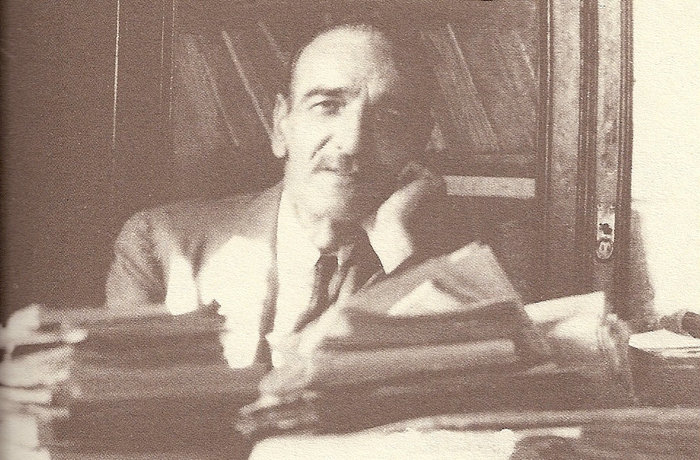

7th stop: First Cemetery of Athens – Gregorios Ksenopoulos family grave
January 14, 1951, Sunday, at 17:56, Grigorios Ksenopoulos died being among his own family, at Vassos Valassakis’s house (the husband of his first daughter, Leonis), at Eptanissos Street 38 Agios Meletios (corner), where he had settled in recent years, after the blasting of his historic house, at 38 Evripidou Street (42).
“The dead corps of Ksenopoulos was transferred to the First cemetery of Athens, where he was buried at the grave of the Ksenopoulos family. The Municipality’s Philharmonic played mourning songs, at the time of the burial, following the wish of the deceased, the mournful mourning of Beethoven’s “Heroic” composition was resolved. The coffin carried by famous writers and people of the literature, as an honour to the diseased. Sculpture of the figure of the deceased was taken by the sculptors Natsios and Lamare. The funeral was public expenditure, most of the wreaths were deposited.“
Excerpt from the funeral description as published in the newspaper “The Kathimerini” on Tuesday, January 16, 1951
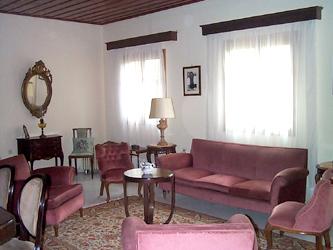
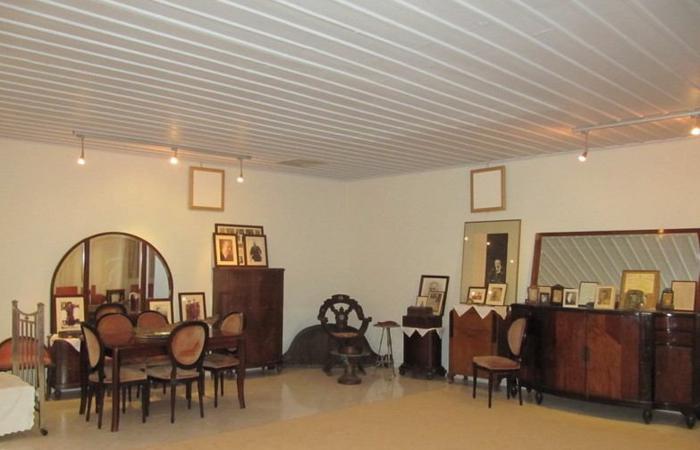
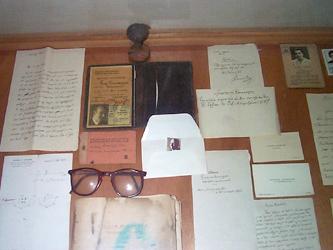

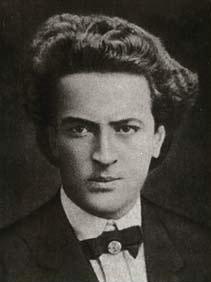
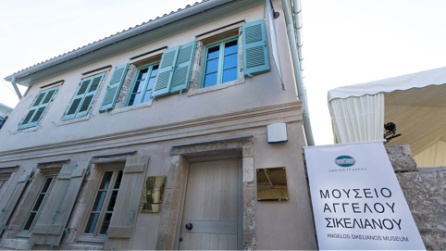 “The Sikelianos house, which houses the homonymous museum, was purchased by the National Bank of Greece in 2009. It was renovated and formed into a pioneering museum space that was delivered to the Municipality of Lefkada and was inaugurated on October 6, 2017. It is a special museum that does not just expose reminders of the Alafroiskiotos’ poet, but travels the visitor to every aspect, not only of his life, but also of his work, through a pioneering architectural and museological approach, the work of a group of distinguished scientists. In its area you will find exhibits that relate to the life and work of Sikelianos, which were offered by large museums, collectors and institutions from all over Greece. In the museum there are special exhibits such as Anna’s wedding dress and woven fabrics, Eva’s handmade clothes for herself and for the Delphic Feasts, her passport, her braid of her red hair, rare editions and manuscripts, photographic material, movies and recorded recitals with the voice of the poet himself. “(Introductory note,
“The Sikelianos house, which houses the homonymous museum, was purchased by the National Bank of Greece in 2009. It was renovated and formed into a pioneering museum space that was delivered to the Municipality of Lefkada and was inaugurated on October 6, 2017. It is a special museum that does not just expose reminders of the Alafroiskiotos’ poet, but travels the visitor to every aspect, not only of his life, but also of his work, through a pioneering architectural and museological approach, the work of a group of distinguished scientists. In its area you will find exhibits that relate to the life and work of Sikelianos, which were offered by large museums, collectors and institutions from all over Greece. In the museum there are special exhibits such as Anna’s wedding dress and woven fabrics, Eva’s handmade clothes for herself and for the Delphic Feasts, her passport, her braid of her red hair, rare editions and manuscripts, photographic material, movies and recorded recitals with the voice of the poet himself. “(Introductory note, 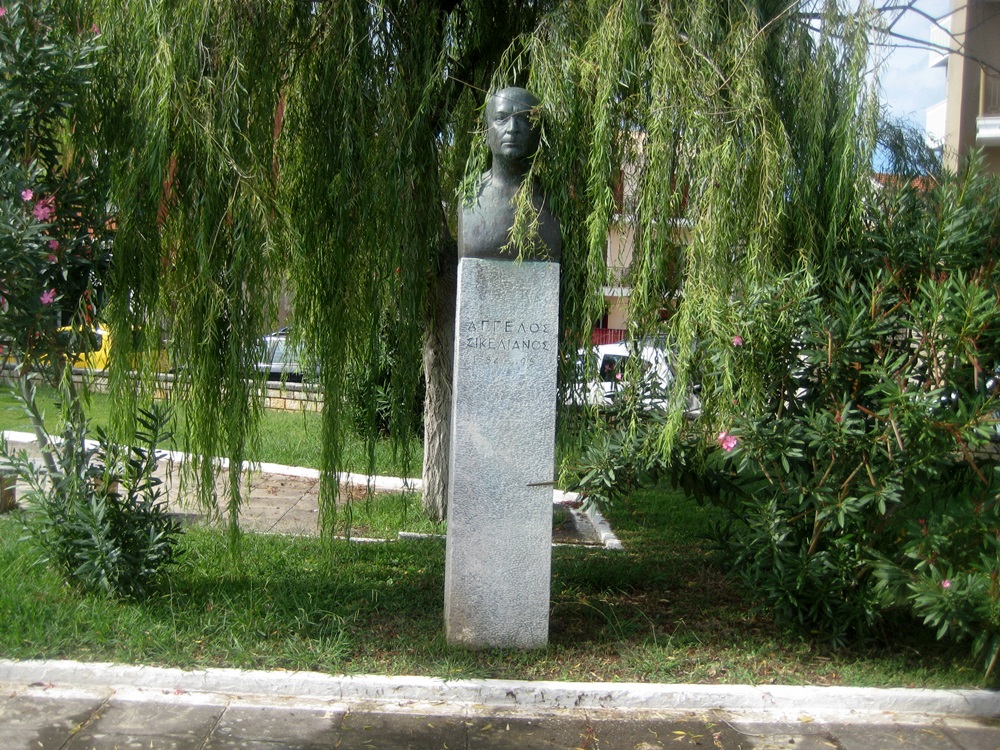
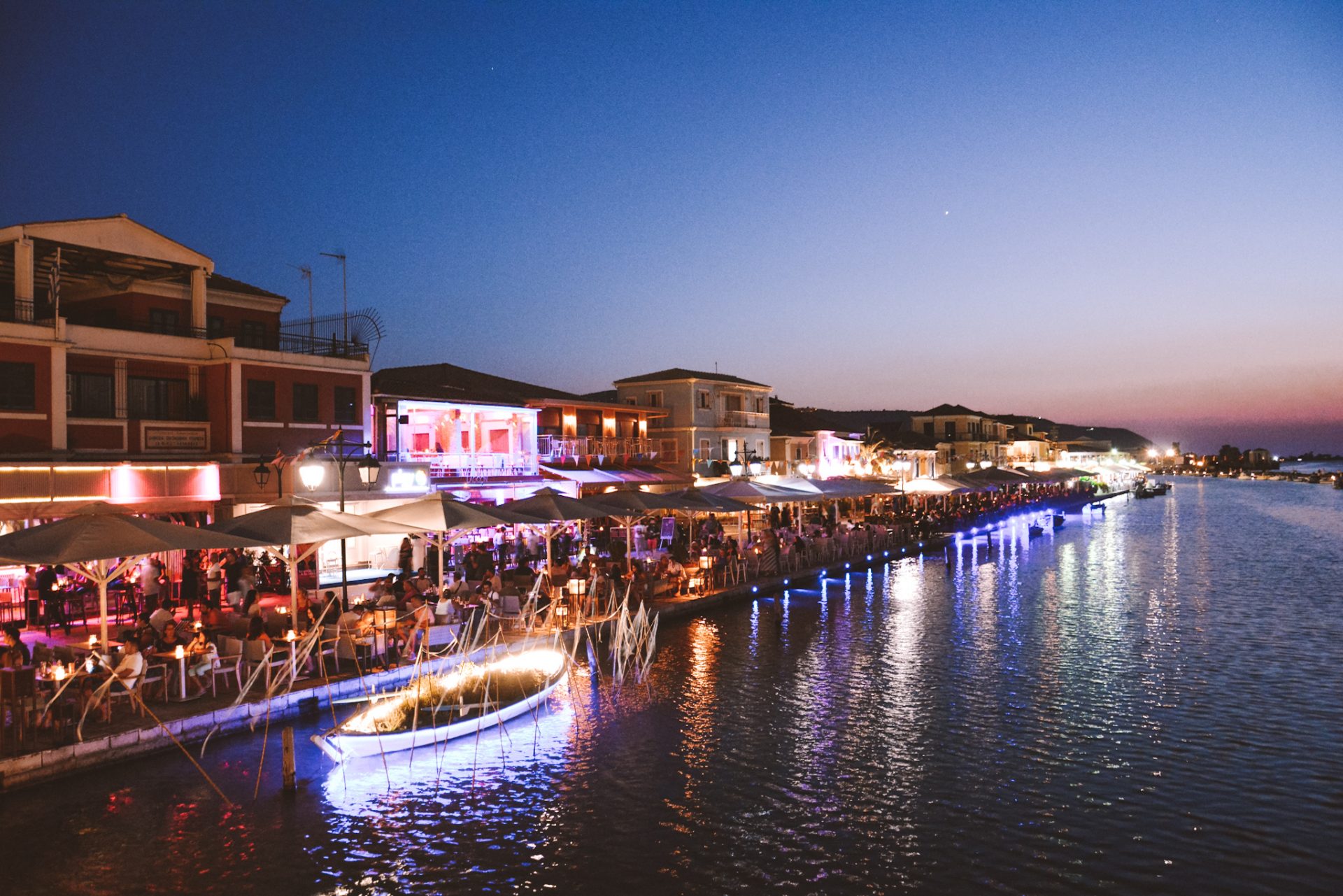
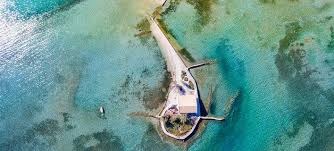


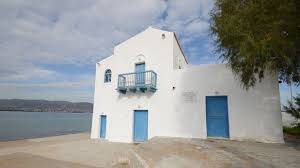
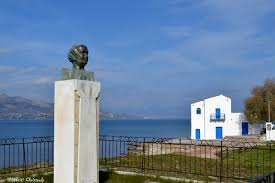
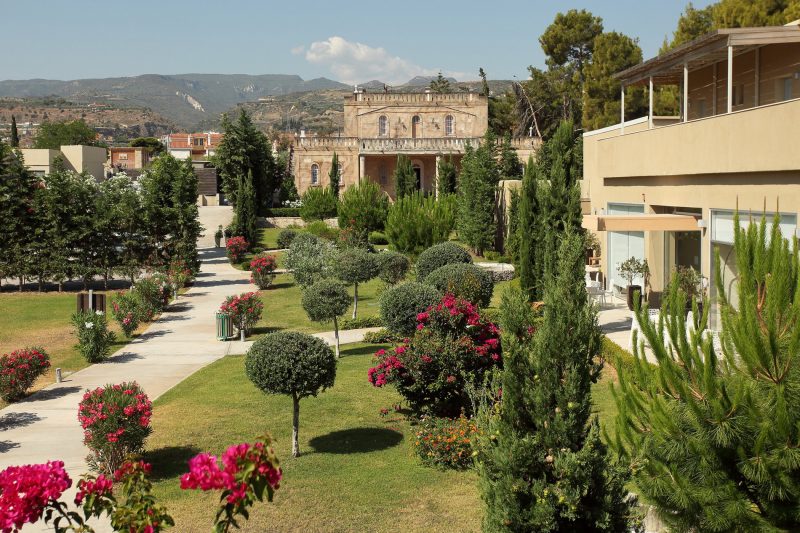
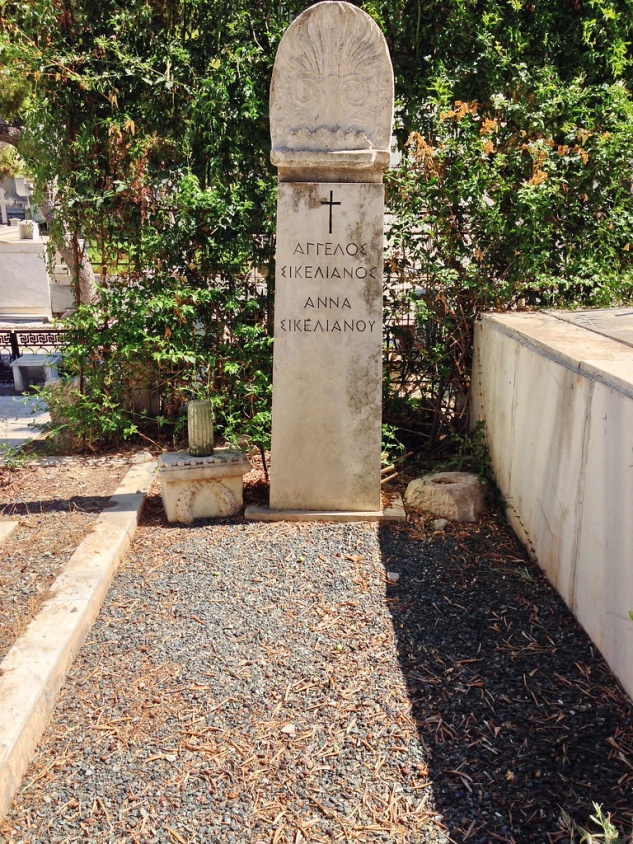

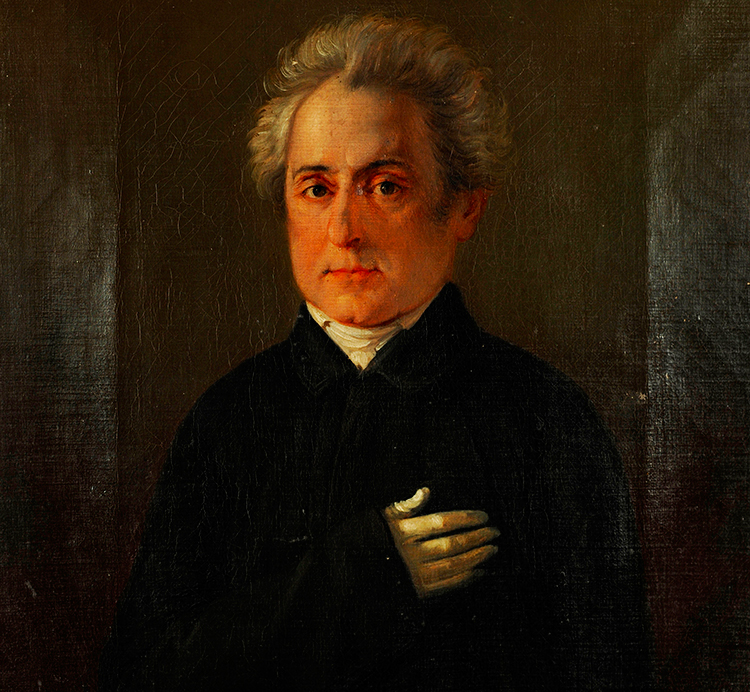
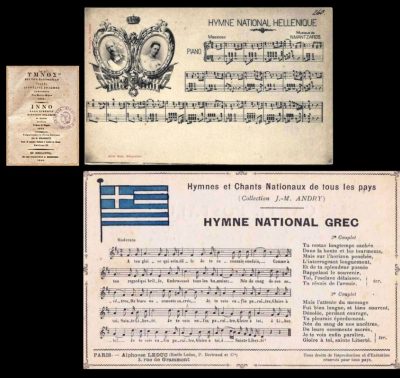

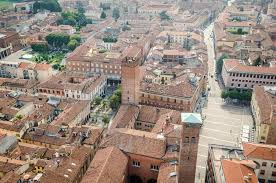
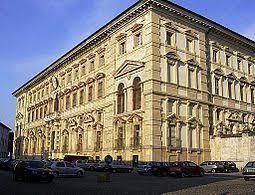 Graduating from the High School of Cremona, Dionysios will give examinations and will be written at the beginning of November 1815 at the Law School of Pavia. The university is renowned and has eminent teachers. At the University Allesandro Volta teaches Physics. There is also the mathematician and poet Lorenzo Mascheroni, the mathematician Gregorio Fontana and the famous poet Vincenzo Monti and Hugo Foscolo (Ugo Foscolo). Undoubtedly, in Pavia Dionysios is more interested in poetry and less in the Faculty of Law. After two years of study, on May 15, 1817, Dionysios will pass an examination before a seven-member committee (consisting of Giardini, Tampourini, Prinna, Beretta, Bellardi-Grannelli and Boutourini), passing them with honors and he will acquire the baccellierato bachelor’s degree. The attendance of the courses, however, seems to continue at least until the end of 1817. During his three years in Pavia for his law studies, Dionysios had the opportunity to travel to nearby Cremona where he was his guardian, Santo Rossi and his friends, but he also travels in Milan, the capital of Lombardy and the spiritual center of northern Italy. There he will meet many people of arts and will find himself in the atmosphere of this particular era that begins in 1815 and confronts neoclassicism with romance.
Graduating from the High School of Cremona, Dionysios will give examinations and will be written at the beginning of November 1815 at the Law School of Pavia. The university is renowned and has eminent teachers. At the University Allesandro Volta teaches Physics. There is also the mathematician and poet Lorenzo Mascheroni, the mathematician Gregorio Fontana and the famous poet Vincenzo Monti and Hugo Foscolo (Ugo Foscolo). Undoubtedly, in Pavia Dionysios is more interested in poetry and less in the Faculty of Law. After two years of study, on May 15, 1817, Dionysios will pass an examination before a seven-member committee (consisting of Giardini, Tampourini, Prinna, Beretta, Bellardi-Grannelli and Boutourini), passing them with honors and he will acquire the baccellierato bachelor’s degree. The attendance of the courses, however, seems to continue at least until the end of 1817. During his three years in Pavia for his law studies, Dionysios had the opportunity to travel to nearby Cremona where he was his guardian, Santo Rossi and his friends, but he also travels in Milan, the capital of Lombardy and the spiritual center of northern Italy. There he will meet many people of arts and will find himself in the atmosphere of this particular era that begins in 1815 and confronts neoclassicism with romance. Solomos Hall displays the precious manuscripts and the original portrait of the poet, made by an unknown artist shortly before the death of the poet. There are also the portraits of members of his family and his beloved: his brother of Dimitrios, the father of the Count Nikolaos Solomos, his uncle and his guardian after the death of his father, Nicholas Messalas, his little niece Elizabeth Dimitriou Solomos, who died at the age of three, and his teacher Antonios Martelaos. Also the translations of his friend Nicholas Loutzis, who had translated German philosophers into Italian, whose prototypes are displayed in the room, along with his portrait. A painting with processed digital photographs shows the poet’s journey between Greece, Italy, Zakynthos, Corfu and again Zakynthos, where he resides in his last home. In the room is the coat of arms of the Solomos family, depicting a salmon fish! There are also the personal things of the poet, such as his cartridges and books of his library. In a special showcase, are displayed his official uniform and the degree of the declaration of his brother Dimitrios, as the President of the Ionian Senate. An emotional atmosphere is created by the wreath sent by the Psarians along with some soil from Psara, for the epigram that Solomos wrote about the destruction of Psara, during the celebrations dedicated to Solomos organized in 1902.
Solomos Hall displays the precious manuscripts and the original portrait of the poet, made by an unknown artist shortly before the death of the poet. There are also the portraits of members of his family and his beloved: his brother of Dimitrios, the father of the Count Nikolaos Solomos, his uncle and his guardian after the death of his father, Nicholas Messalas, his little niece Elizabeth Dimitriou Solomos, who died at the age of three, and his teacher Antonios Martelaos. Also the translations of his friend Nicholas Loutzis, who had translated German philosophers into Italian, whose prototypes are displayed in the room, along with his portrait. A painting with processed digital photographs shows the poet’s journey between Greece, Italy, Zakynthos, Corfu and again Zakynthos, where he resides in his last home. In the room is the coat of arms of the Solomos family, depicting a salmon fish! There are also the personal things of the poet, such as his cartridges and books of his library. In a special showcase, are displayed his official uniform and the degree of the declaration of his brother Dimitrios, as the President of the Ionian Senate. An emotional atmosphere is created by the wreath sent by the Psarians along with some soil from Psara, for the epigram that Solomos wrote about the destruction of Psara, during the celebrations dedicated to Solomos organized in 1902.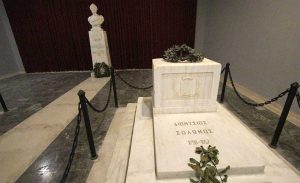 Since 1968, the Mausoleum has been the home of the bones of the national poets Andreas Kalvos and Dionysios Solomos and is located on the ground floor of the Museum of Solomos & Eminent People of Zakynthos. It was built on the proposal of the then prefect of Zakynthos, Andreas Ioannou. Solomos’s bones were transferred to the Mausoleum after four consecutive burials: the first after his death in Corfu (February 9/21, 1857), the second after the transfer of his bones to Zakynthos in today’s San Marcos Square (14/27 July 1865 ), the third in the same place after the completion of the construction of the Museum and the temporary placement of the bones in the Church of the Lady of the Angels (21 April 1962) and the fourth and final burial, from 17 January 1968, in Mausoleum. In the same room is located on a column the bay of Solomos, the work of the Phytalis brothers from the monument, which was in San Marcos Square, in front of the temple of Pantokrator. On the walls there are lyrics from the poems of the two poets and at the door lintel, at the exit of Mausoleum, verses from Calvos’ “Ode to Thanaton”.
Since 1968, the Mausoleum has been the home of the bones of the national poets Andreas Kalvos and Dionysios Solomos and is located on the ground floor of the Museum of Solomos & Eminent People of Zakynthos. It was built on the proposal of the then prefect of Zakynthos, Andreas Ioannou. Solomos’s bones were transferred to the Mausoleum after four consecutive burials: the first after his death in Corfu (February 9/21, 1857), the second after the transfer of his bones to Zakynthos in today’s San Marcos Square (14/27 July 1865 ), the third in the same place after the completion of the construction of the Museum and the temporary placement of the bones in the Church of the Lady of the Angels (21 April 1962) and the fourth and final burial, from 17 January 1968, in Mausoleum. In the same room is located on a column the bay of Solomos, the work of the Phytalis brothers from the monument, which was in San Marcos Square, in front of the temple of Pantokrator. On the walls there are lyrics from the poems of the two poets and at the door lintel, at the exit of Mausoleum, verses from Calvos’ “Ode to Thanaton”.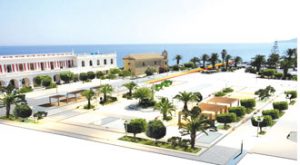
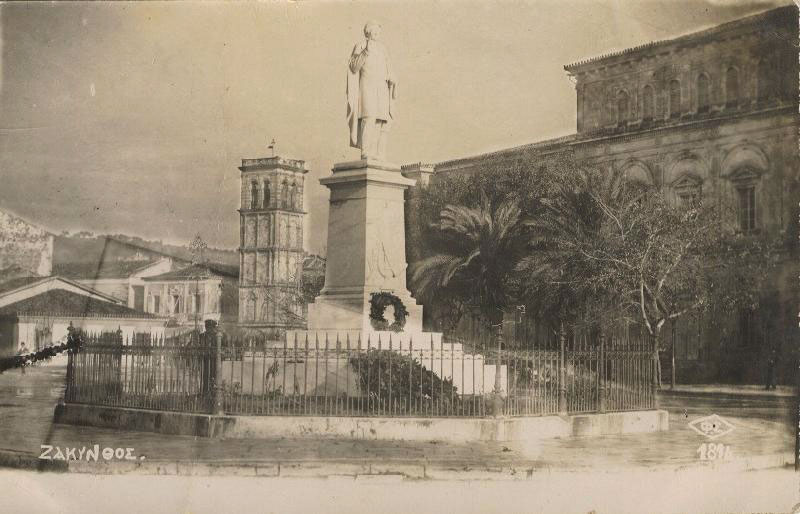
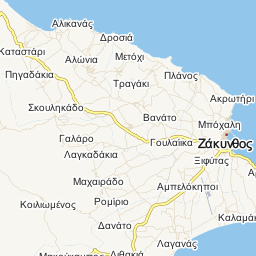 Zakynthos Akrotiri is a settlement of the municipality of Zakynthos. Close to the settlement there is a steep beach of 2.5 km long. The beach limits are set by the Kryoneri lighthouse to the Trenton-nove (or Voda) island. Within close proximity to the southern tip of the island is Cape Red Rock, where, according to the local tradition, Fodini Sandri has committed suicide, a person who is also the heroine of the novel by Grigorios Xenopoulos. The beach has a special natural beauty and has been declared a monument by the Ministry of Culture.
Zakynthos Akrotiri is a settlement of the municipality of Zakynthos. Close to the settlement there is a steep beach of 2.5 km long. The beach limits are set by the Kryoneri lighthouse to the Trenton-nove (or Voda) island. Within close proximity to the southern tip of the island is Cape Red Rock, where, according to the local tradition, Fodini Sandri has committed suicide, a person who is also the heroine of the novel by Grigorios Xenopoulos. The beach has a special natural beauty and has been declared a monument by the Ministry of Culture.